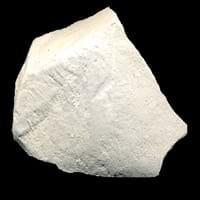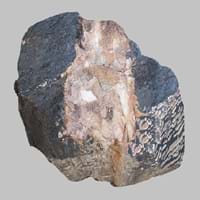Definition
Chalk is a soft, white, powdery limestone consisting mainly of fossil shells of foraminifers
Claystone is a fine-grained, dark gray to pink sedimentary rock which mainly consists of compacted and hardened clay
Discoverer
Unknown
Unknown
Etymology
From old English cealc chalk, lime, plaster; pebble, from Greek khalix small pebble, in English transferred to the opaque, white, soft limestone
From English clay and stone as the rock contains more amount of clay
Class
Sedimentary Rocks
Sedimentary Rocks
Sub-Class
Durable Rock, Soft Rock
Durable Rock, Medium Hardness Rock
Group
Not Applicable
Not Applicable
Other Categories
Fine Grained Rock, Opaque Rock
Fine Grained Rock, Opaque Rock
Texture
Clastic or Non-Clastic
Clastic
Color
Grey, White, Yellow
Black, Blue, Brown, Green, Grey, Orange, Red, White, Yellow
Durability
Durable
Durable
Appearance
Soft
Rough and Dull
Interior Uses
Decorative Aggregates, Homes, Interior Decoration
Decorative Aggregates, Entryways, Floor Tiles, Homes, Interior Decoration
Exterior Uses
As Building Stone, As Facing Stone, Paving Stone, Garden Decoration
As Facing Stone, Roof Tiles
Other Architectural Uses
Powder
Curbing
Construction Industry
As Dimension Stone, Cement Manufacture, Construction Aggregate, for Road Aggregate, Making natural cement, raw material for manufacture of quicklime and slaked lime, Source of calcium
As a Sintering Agent in Steel Industry to process Iron Ore, Cement Manufacture, Construction Aggregate, for Road Aggregate, Making natural cement, Raw material for the manufacture of mortar
Medical Industry
Not Yet Used
Not Yet Used
Antiquity Uses
Artifacts, Monuments, Sculpture, Small Figurines
Artifacts, Sculpture, Small Figurines
Commercial Uses
Alumina Refineries, Creating Artwork, Drawing on blackboards, Gymnasts, athletes and mountain climbers use for grip, In aquifers, Paper Industry, Production of Lime, Raw material for manufacture of quicklime, slaked lime, Soil Conditioner, Whiting, Whiting material in toothpaste, paint and paper
Pottery
Types
Not Available
Not Available
Features
Clasts are smooth to touch, Is one of the oldest rock, Smooth to touch, Very fine grained rock
Available in Lots of Colors and Patterns, Smooth to touch, Very fine grained rock
Archaeological Significance
Monuments
Used
Not Yet Used
Famous Monuments
Data Not Available
Not Applicable
Famous Sculptures
Data Not Available
Data Not Available
Formation
Chalk is formed from lime mud, which accumulates on the sea floor which is then transformed into rock by geological processes.
Claystone is generally quite soft, but can be hard and brittle. It forms due to weathering of mudstone.
Mineral Content
Calcite, Clay, Clay Minerals, Quartz, Sand
Biotite, Chlorite, Feldspar, Micas, Muscovite or Illite, Plagioclase, Pyrite, Quartz
Compound Content
Ca, NaCl, CaO
Aluminium Oxide, Ca, NaCl, CaO, Iron(III) Oxide, MgO, Silicon Dioxide
Types of Metamorphism
Not Applicable
Not Applicable
Types of Weathering
Biological Weathering, Chemical Weathering
Biological Weathering, Chemical Weathering, Mechanical Weathering
Types of Erosion
Chemical Erosion, Coastal Erosion, Water Erosion
Coastal Erosion, Water Erosion
Grain Size
Very fine-grained
Fine Grained
Fracture
Not Available
Not Available
Porosity
Highly Porous
Very Less Porous
Cleavage
Non-Existent
Perfect
Specific Gravity
2.3-2.4
0
Transparency
Opaque
Opaque
Density
2.49-2.50 g/cm3
2-2.9 g/cm3
Resistance
Heat Resistant
Heat Resistant, Impact Resistant
Deposits in Eastern Continents
Asia
Brunei, India, Indonesia, Malaysia, Singapore, Thailand, Vietnam
Bangladesh, China, India, Russia
Africa
Cameroon, Chad, Ghana, Kenya, Malawi, Sudan, Tanzania, Togo, Zambia, Zimbabwe
Ethiopia, Kenya, Morocco, South Africa, Tanzania
Europe
England, France, Germany, Spain, United Kingdom
Austria, France, Germany, Greece, Italy, Romania, Scotland, Spain, Switzerland
Others
Not Yet Found
Not Yet Found
Deposits in Western Continents
North America
Canada, USA
Canada, Panama, USA
South America
Colombia
Bolivia, Chile, Colombia, Ecuador, Peru, Venezuela
Deposits in Oceania Continent
Australia
Adelaide, New Zealand, Queensland, Tonga, Victoria, Yorke Peninsula
New South Wales, New Zealand, Queensland, Victoria, Western Australia
All about Chalk and Claystone Properties
Know all about Chalk and Claystone properties here. All properties of rocks are important as they define the type of rock and its application. Chalk and Claystone belong to Sedimentary Rocks.Texture of Chalk is Clastic or Non-Clastic whereas that of Claystone is Clastic. Chalk appears Soft and Claystone appears Rough and Dull. The luster of Chalk and Claystone is dull. Chalk is available in grey, white, yellow colors whereas Claystone is available in black, blue, brown, green, grey, orange, red, white, yellow colors. The commercial uses of Chalk are alumina refineries, creating artwork, drawing on blackboards, gymnasts, athletes and mountain climbers use for grip, in aquifers, paper industry, production of lime, raw material for manufacture of quicklime, slaked lime, soil conditioner, whiting, whiting material in toothpaste, paint and paper and that of Claystone are pottery.










